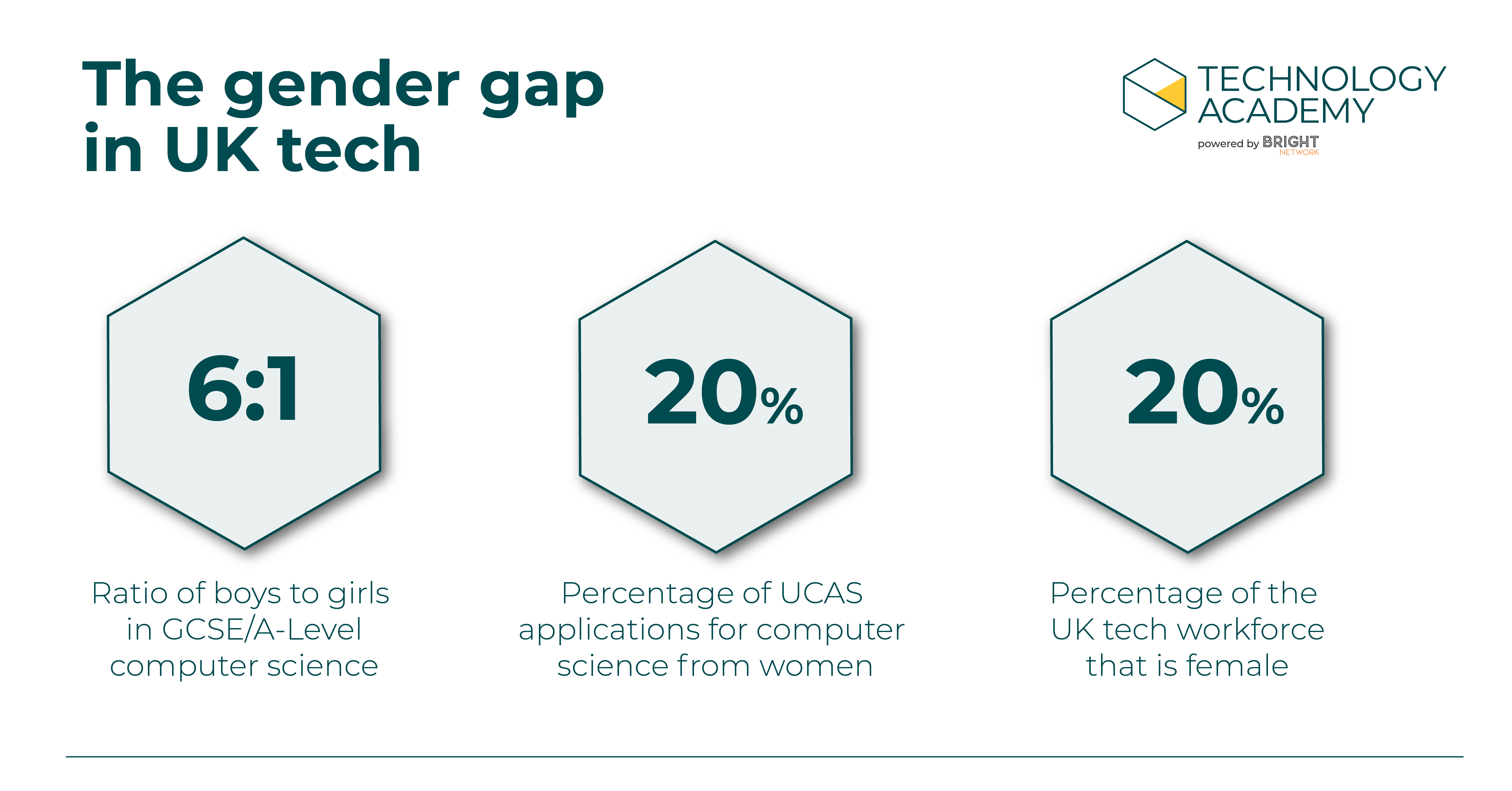The gender imbalance in UK tech
With UCAS deadlines a few weeks away, we're looking at the gender gap in tech and why more needs to be done to promote tech to women.
Research has found that only 20% of UCAS applications for computer science in 2022 were from women. However, UCAS stats alone only tell part of the story. Look back further to GCSE/A-Level computer science classes and you will see that this gender imbalance is already present. Research from the British Science Society (BCS) has found that girls are outnumbered; on average by 6:1 in school computer science classes. But in some regions this gender imbalance increases to 10:1.
These stark statistic show that, despite increases in computer science applications from women (up 544% since 2014), more needs to be done at every level to close the gender gap in the technology sector and ensure we have a diverse tech workforce that creates products and services for everyone in society.
When discussing gender imbalance in tech, Dame Muffy Calder from BCS said:
"This [gender imbalance] matters because teams that develop, say, the use of AI in medicine, or algorithms that affect our financial lives or employment chances need to be diverse to ensure outcomes are fair and relevant to everyone in society."

The question is: what action needs to be taken?
The answer to this is not simple, and it is something we will be covering in depth in our upcoming white paper. However, the solution must be targeted at schools, universities and businesses to truly succeed.
At a school and grassroots level, more must be done to promote computer science to girls. Small scale initiatives like after school clubs have shown that with the right support and promotion, girls can be engaged with tech. However, these initiatives put the onus on teaching staff who in many cases do not have the capacity to take on additional work. At Technology Academy, we have also shown the power of targeted outreach - running annual events like Women in TEC to inspire university students to pursue a career in tech - regardless of what they're studying. Alone, these initiatives can only do so much, but couple them with increased promotion of computer science to girls by schools and we will start to see the change we all want in the UK tech workforce.
However, this is only part of the solution. Grass roots initiatives will take years to have demonstrable impact. And as Marian Wright Edelman, American Activist for Civil Rights, famously said 'You can't be what you can't see'. So how can we expect girls to want to pursue a career in tech when women make up just 19% of the UK tech workforce?
That is why we must also drive initiatives at a business level that provide women with the equitable support they need to break into tech. At Bright Network Technology Academy we're committed to engaging women who want to pursue a career in tech. Providing them with the training they need post university to build the foundations they need to become junior software engineers.
The result – 50% of software engineers from our bootcamp are female, creating the change we need right now, for this generation and the next to see that the women have a place in tech.

